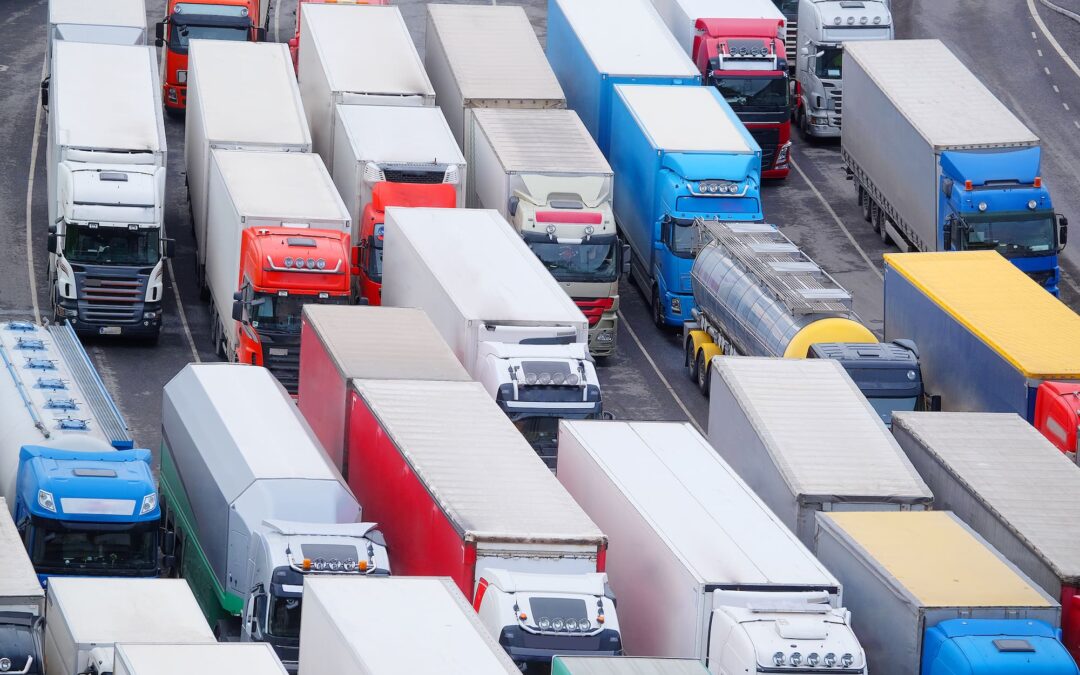Understanding how to avoid bottlenecks is crucial when moving freight domestically. A bottleneck is a point of congestion in a process that slows movement. In shipping, this can mean traffic or other situations that cause disruptions in a supply chain. Specifically in the U.S., domestic shipping is crucial for most companies. The intersection of Interstate 95 and New Jersey State Route 4 is one of the biggest bottlenecks in U.S. trucking. The (ATRI) American Transportation Research Institute notes that the average peak speed of the intersection was 19.9mph in 2023. Shippers must prepare to navigate bottlenecks and successfully transport their shipments as cargo volumes grow.
Why Is Knowing How To Avoid Bottlenecks Essential?
Traffic in the U.S. reportedly causes the trucking industry nearly $74.5 billion in losses yearly. Bottleneck congestion also accounts for approximately 1.2 billion lost work hours, equaling 425,533 trucks sitting idle for a year. With the cargo that shippers move, knowing how to avoid bottlenecks is essential for companies and individuals. There are numerous effects that holdups have on the trucking industry, such as delays, costs, and economic impact. Increasing carriers staying idle can also lead to more significant emissions, causing air pollution.
Trucking bottlenecks also impact the incurred costs on various parts of a supply chain. For shippers, delays due to holdups like congestion are approximately $7 billion yearly. If the shipper has customers, congestion can raise the cost of goods. For trucking companies, there is a limit to how many hours a trucker can work a day. If a carrier spends a certain amount of the day in traffic, it takes hours away from productivity. The hours add up over time and may lead to monetary loss. Carrier companies might also lose customers since clients require fast delivery of shipments, which bottlenecks can disrupt. Many even decide to use expedited trucking services to prevent delays in the transportation process.
How Can You Handle Bottlenecks?
While it may be challenging to prevent bottlenecks, there are ways that you can protect your supply chain. The primary step is identifying where the bottleneck occurs, which a carrier can do with trucking technologies like GPS. Another example is traffic sensors on trucks that send data about the congestion to trucking companies. The carrier may then use the data for route optimization, which can mean finding a better route to avoid traffic. Having alternative delivery times is also a way to protect against bottlenecks. Due to rush hour, there can be less traffic when shipping cargo at 1 pm than at 6 pm.
Good communication with other parts of your supply chain additionally can help protect against bottlenecks. Trucking is usually the last mile when importing into the U.S. A carrier with direct contact with the shipper or containership can better prepare and navigate the congestion. Another way to handle bottlenecks is by speaking to a freight broker before shipping your goods. Brokers act as the middleman between shippers and carriers and coordinate the shipment for the shipper. Along with ensuring cargo movement, they educate the shipper throughout the process. Reach A1 Freight Solutions at 786-375-9420 to talk to our broker and learn about our solutions for navigating congestion.

